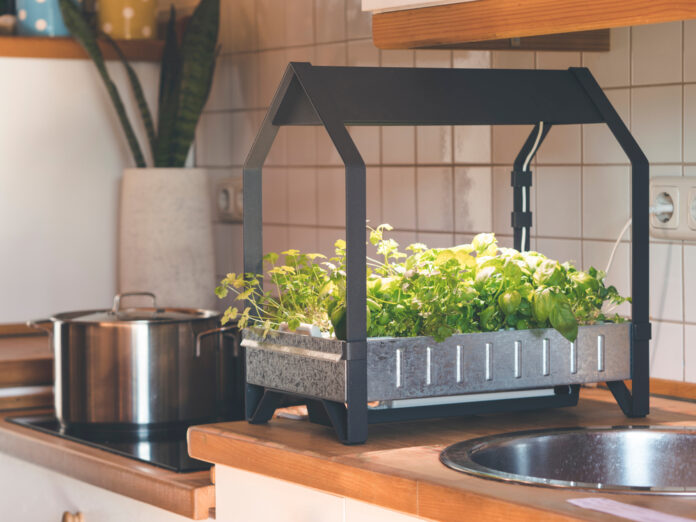Imagine harvesting fresh lettuce, herbs, and tomatoes right from your kitchen, regardless of the season. With indoor hydroponic gardening, this vision can become a reality. Hydroponics is a method of growing plants without soil, using nutrient-rich water solutions to deliver essential minerals directly to plant roots. This innovative approach is perfect for those with limited space or anyone looking to enjoy homegrown produce year-round.
Benefits of Indoor Hydroponic Gardening
Indoor hydroponic systems offer several advantages over traditional soil gardening. By eliminating the need for soil, gardeners can conserve water, maximize space, and achieve faster growth rates. Plants receive nutrients directly, leading to potentially higher yields and healthier crops. Moreover, indoor setups allow for controlled environments, reducing the risk of pests and diseases.
Choosing the Right Plants
Selecting suitable plants is crucial for a successful hydroponic garden. Leafy greens like lettuce and spinach are ideal for beginners due to their rapid growth and shallow root systems. Herbs such as basil, mint, and cilantro also thrive in hydroponic conditions. With the appropriate equipment and space, you can even grow fruiting plants like tomatoes and strawberries.
Types of Hydroponic Systems
There are various hydroponic systems to choose from, each with its own complexity and suitability for different plants:
- Wick System: This is the simplest method, involving no moving parts. Nutrients are drawn up to the plant roots through a wick. It’s perfect for growing microgreens and herbs.
- Deep Water Culture (DWC): Plants are suspended in nutrient-rich water with roots submerged directly, requiring aeration to supply oxygen.
- Ebb and Flow System: This system periodically floods the grow tray with nutrient solution before draining back into a reservoir. It allows for diverse plant cultivation.
- Nutrient Film Technique (NFT): A continuous flow of nutrient solution runs over the roots in a shallow stream, suitable for fast-growing, shallow-rooted plants.
- Aeroponic System: Plants are suspended with roots exposed to air and misted with nutrient solution. While efficient, it requires a more sophisticated setup.
Setting Up Your Hydroponic Garden
Starting your indoor hydroponic garden involves several steps:
Plan Your Garden
Decide on the plants you wish to grow, as this will influence your system choice, space requirements, and equipment. Starting with leafy greens is recommended for beginners.
Select a Hydroponic System
Choose a system that suits your space, budget, and gardening experience. Beginners may opt for simpler setups like the wick system or DWC buckets.
Gather Equipment and Supplies
Essential items include:
- Grow Lights: Indoor gardens need adequate lighting to simulate sunlight. Full-spectrum LED lights are energy-efficient and effective for plant growth.
- Growing Medium: Since soil isn’t used, alternatives like coco coir, perlite, or clay pebbles provide support for plant roots.
- Nutrient Solutions: Plants require a balanced mix of macro and micronutrients. Hydroponic-specific fertilizers ensure they receive the right nutrients.
- pH Testing Kit: Maintaining a pH between 5.8 and 6.2 is crucial for nutrient uptake.
- Water Reservoir and Pumps: For systems requiring water circulation, you’ll need reservoirs, submersible pumps, and possibly air stones for aeration.
Assemble Your System
Set up your hydroponic system according to the manufacturer’s instructions or DIY plans. Test the system with plain water first to check for leaks and proper operation.
Prepare Nutrient Solution
Mix your nutrient solution according to the package instructions. Adjust the pH as necessary.
Plant Your Seeds or Seedlings
Germinate seeds in a starter medium or purchase seedlings suitable for hydroponic transfer. Place them into your growing medium within the system.
Install Grow Lights and Set Timers
Position your grow lights appropriately to cover all plants. Use timers to simulate day and night cycles, typically 14-16 hours of light per day for most vegetables.
Maintaining Your Hydroponic Garden
Regular maintenance ensures a healthy garden:
- Monitor Nutrient Levels: Regularly check and adjust nutrient concentrations and pH levels.
- Maintain Water Quality: Keep an eye on water temperature and replace the nutrient solution every two to three weeks.
- Check for Pests and Diseases: Although indoor hydroponic gardens have fewer pest issues, consistent monitoring helps catch any problems early.
- Ensure Proper Air Circulation: Good airflow prevents mold and provides plants with CO2 necessary for growth.
Where to Get Equipment
You can find hydroponic supplies at specialty gardening stores or online retailers. For a convenient shopping experience, consider GrowGeneration, which offers a wide range of products and customer support for hydroponic gardeners.
Conclusion
Starting an indoor hydroponic garden is an exciting way to grow fresh produce all year round. While it requires an initial investment and learning curve, the benefits of higher yields and efficient space use make it worthwhile. With careful planning and maintenance, you’ll enjoy the fruits—and vegetables—of your labor in no time.


